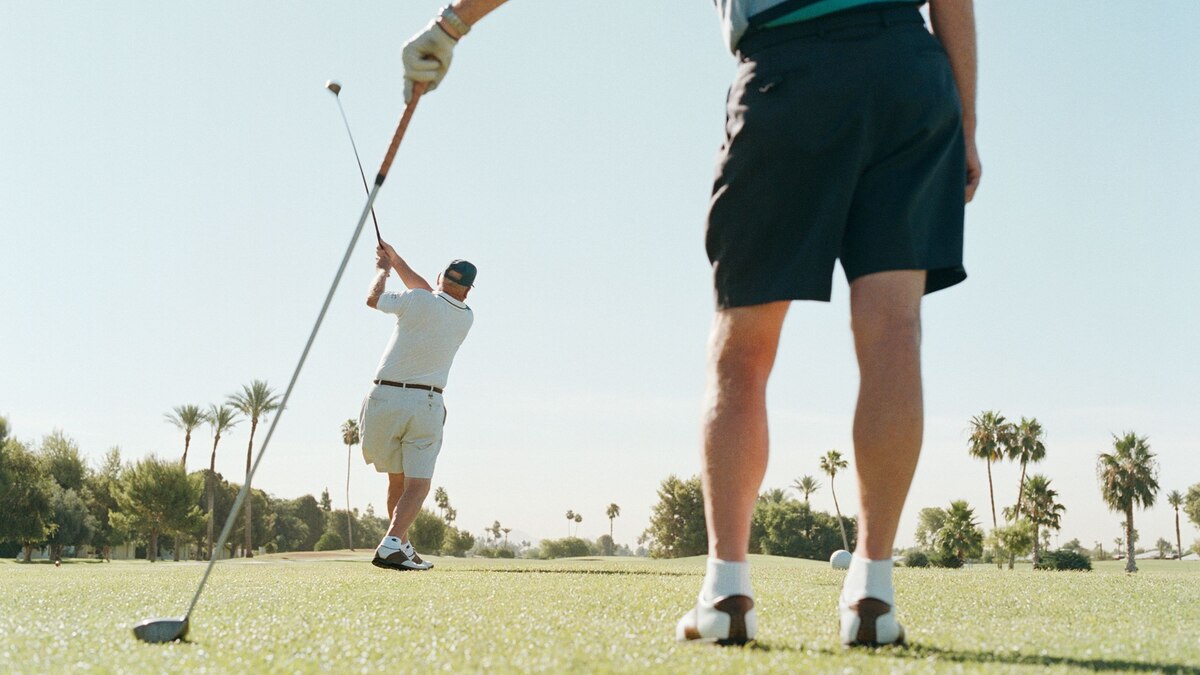Copyright National Geographic

Golf may look like a leisurely pastime, but don’t be fooled by the unhurried pace or neatly trimmed greens. Beneath its calm exterior lies one of the most unexpectedly complete workouts and wellness boosts around. “Over 100 million people worldwide now play golf, which is great for both individual and public health,” says Julia Kettinen, an exercise medicine lecturer at the University of Eastern Finland’s School of Medicine. “The magic of golf is that it doesn’t feel like exercise, yet it gives you the perfect combination of aerobic activity, muscle engagement, brain exercise, and time in nature.” ('I want to live to be 100.' Longevity lessons from sports icons.) It's a combination worth swinging for, as a growing body of research links regular play to better cardiovascular fitness, improved blood sugar control, lower blood pressure, muscle support, sharper thinking skills, and even longer life expectancy. From heart health to mental resilience, the science behind the game is striking—and the findings may make you see a round on the course in a whole new light. Walking your way to a healthier heart Eighteen holes might sound like a stroll, but studies show that golfers walk up to six miles per round. "Each round of golf consistently provides over 11,000 steps of exercise, which surpasses commonly held healthy living guidelines of achieving at least 10,000 steps per day," says David Lindsay, emeritus head physical therapist at the University of Calgary Sport Medicine Center in Canada. That amount of movement provides endless benefits. For starters, Lindsay notes that the average male golfer burns about 900 calories per round and women about 700. Carrying a bag of clubs boosts those numbers by another 10 to 15 percent. LIMITED TIME OFFER Burning those calories isn’t only good for weight management; it's also linked to a lower risk of dementia, cancer, depression, type 2 diabetes, and overall mortality. "Even if you take a cart, you end up walking a couple of miles going to and from tees, scoping shots, and navigating the course, so you’ll still burn about half the number of calories as non-cart golfers," says Joyce Gomes-Osman, a physical therapist and neurologist at the University of Miami Miller School of Medicine. (Rowing is also hugely beneficial for older women. Here’s why I do it.) Cardiovascular rewards also abound. Heart-rate monitoring shows golfers routinely exercise in the moderate-intensity zone, which is important for building cardiovascular endurance, improving circulation, and strengthening the heart muscle. In fact, in one study, women reached peaks of about 80 percent of their maximum heart rate while walking uphill fairways, and men reached about 70 percent. And the heart-health advantages extend beyond stamina. In a recent randomized cross-over trial, for instance, playing 18 holes was found to produce acute improvements in cardiometabolic markers such as blood pressure and heart rate—sometimes greater than those achieved by brisk walking for the same duration. “Part of this has to do with the fact that below the anaerobic threshold—the so-called ‘burn’ level—the body uses a high degree of energy from fat,” explains Neil Wolkodoff, medical program director of the Colorado Center for Health and Sports Science. “That positively impacts blood lipid levels and, over time, can help reduce fat reserves.” Golf has also been shown to improve circulation and lower the risk of heart disease—findings supported by a landmark Swedish cohort study of more than 300,000 individuals. Partly because of these benefits, researchers found that golfers had a 40 percent lower mortality rate and lived an average of five years longer than the general population. “The message is clear,” says Lindsay: “Play golf and live longer.” A full-body workout for your muscles and joints Golf also provides significant musculoskeletal advantages. “Golf works more muscles than people realize,” says Rami Hashish, a physical therapist and biomechanics consultant at the National Biomechanics Institute. The full-body swing, for instance, “activates your glutes, hips, obliques, back, shoulders, and forearms in a kinetic chain—from the ground up through the core.” In fact, electromyography studies confirm that upper-body and hip muscles work at substantial intensities during the full swing—often enough to stimulate weight training effects when repeated across practice and play. Even the seemingly simple act of hauling around your clubs can turn the game into a form of resistance training. “Carrying or pushing a 20- to 30-pound load adds low-weight, high-repetition resistance,” says Hashish. (What lifting weights does to your body—and your mind.) Still, don’t expect to bulk up this way. While this form of resistance training can improve core stability and help maintain lean muscle mass, Wolkodoff notes that golf itself “does not reach the threshold for muscles to grow in strength, power, or size.” Beyond muscle support, each swing also helps maintain spinal mobility and posture, while walking uneven terrain strengthens stabilizers around the ankles and hips. Such factors are why “golfers often notice better balance, flexibility, and coordination,” says Juan Uribe-Toril, a professor of business at the University of Almería in Spain and author of related research. “These qualities help in daily life and also transfer to other sports.” Playing golf also enhances the brain’s ability to coordinate joint movement (known as proprioception) and improves postural stability—"important components of balance that have been shown to help reduce the risk of falls in the elderly,” says Lindsay. Sharper mind, steadier mood Golf challenges the brain as well in ways a treadmill can’t. Players visualize shots, judge distances and slopes, adjust for club angles, ball position, and wind factors, and execute with fine motor control—often dozens of times per round. “We don’t always think of golf as a brain workout, but it absolutely is,” says Gomes-Osman. “Constant decision-making engages areas of the brain involved in planning, problem-solving, and judgment.” Simply being with friends on the green further enhances mental health. "Unlike fast-paced sports, golf's pace allows for real conversation and friendship, which are essential for mental well-being and fighting loneliness," says Kettinen. (What to see in St Andrews, Scotland—beyond the golf course.) Indeed, a British Journal of Sports Medicine review found that the combination of physical activity, time in nature, and social connection produces measurable improvements in cognitive resilience. Time in green spaces is also associated with lower stress hormones and a better mood. Spending hours outdoors—as one does during the two to five hours of nine or 18 holes—also increases your exposure to sunlight, which is good for your vision, vitamin D levels, and circadian rhythm alignment for better sleep. It also strengthens immune health through exposure to natural airborne compounds called phytoncides. In short, "getting out in open green spaces through golfing blends physical and mental health benefits in a way few activities can,” says Kettinen. Preventing injuries For all its upsides, golf can also cause injuries. The most common issues are lower-back strain, elbow tendinopathies (medial “golfer’s elbow”), rotator-cuff irritation, and wrist overuse—often from repetition, poor mechanics, or skipping warm-ups, says Hashish. Dynamic stretches and preparation can help avoid such issues. "Warming up and cooling down are essential," says Gomes-Osman. "Warming up increases blood flow to muscles and prepares the joints for rotation, while cooling down helps prevent stiffness and aids recovery." Proper technique and posture are also key. "Turning both feet out about 25 degrees and bending the knees and hips about 25 to 30 degrees while keeping the back relatively straight will result in a safe and athletic set-up position," advises Lindsay. A few basic golf lessons can also help in correcting over-swinging, early shoulder pull, or over-gripping—all common contributors to elbow and shoulder pain and injuries. Listening to early warning signs is equally important for preventing long-term problems. “If something feels off mid-round, stop,” advises Hashish. “Pushing through pain often leads to chronic issues."



